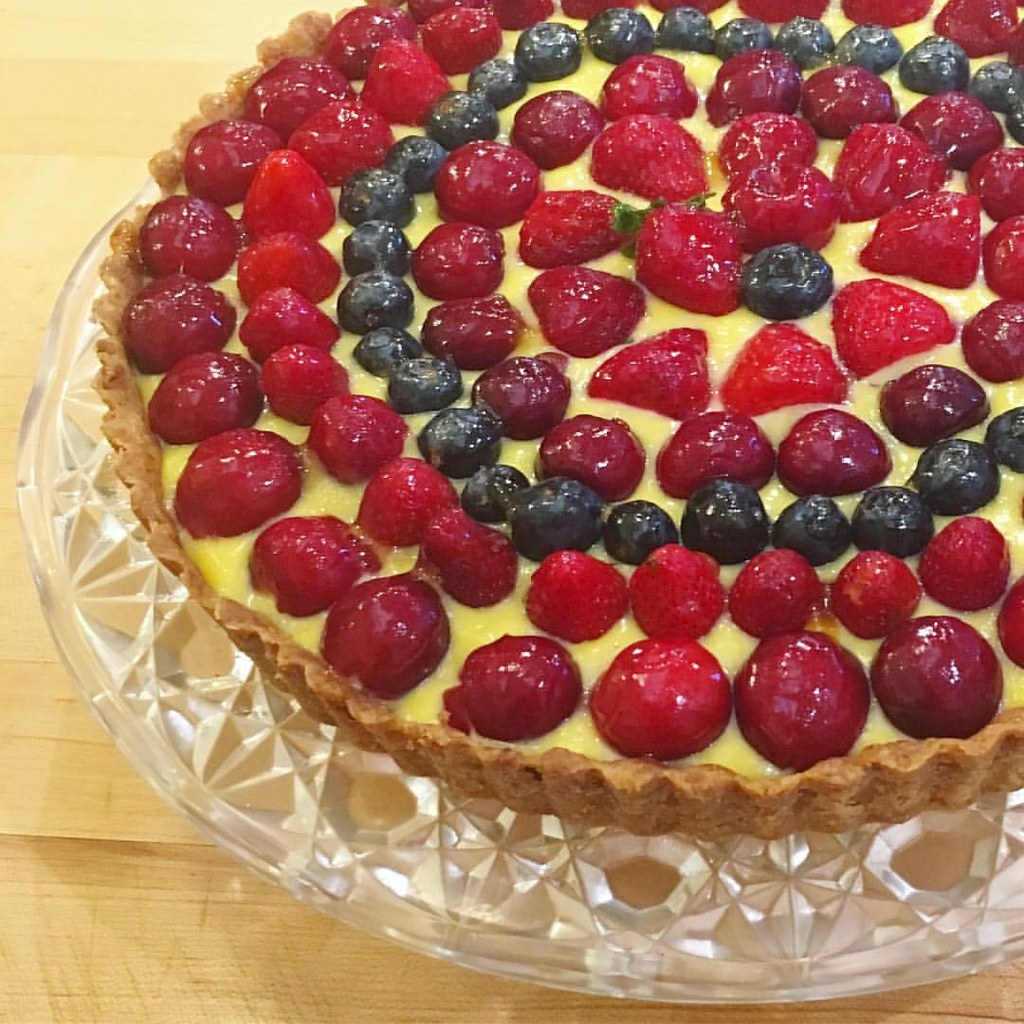Frangipane, or almond cream, is a sweet, creamy, almond-flavored custard, considered one of the essentials in every baker’s pocket. Read on to learn how French and European patisseries are using this flavorful almond filling.
What is Frangipane?
Frangipane is a nutty, sweet, and creamy custard that is abundantly used as a filling in pastries, desserts, and tarts. Contrary to its fancy name, It’s very easy to make. Just a combination of simple baking ingredients including eggs, sugar, butter, almonds, and a hint of flour makes frangipane. The ingredients for frangipane are basic pantry staples, but they come together into a dish worth more than the sum of their parts. Frangipane is fantastic to have on hand for adding velvety richness to nearly any dessert.

History of Frangipane
There are many theories regarding the origin of this fancy and fragrant custard. However, one of the more common stories says that an Italian, Marquis Muzio Frangipani, invented frangipane somewhere between 1674 to 1756. He served as one of the perfumers to King Louis XIII of France and invented an almond-scented leather glove, which was immensely adored by King Louis XIII and other royals of that era.
This glove went so viral owing to the unique bitter almond fragrance, that even bakeries started adding almond flavorings into their pastries, and named them frangipane. It is believed that Marquis Muzio originally used the plant, frangipani, to produce the perfume that flavored frangipane custard, and so the name frangipane was officially given to it.
Frangipane Vs. Marzipan
Frangipane is a very fragrant, creamy, and richly sweet paste, having a nutty flavor due to the ground or pasted almonds in it. Frangipane is often confused with marzipan, as both are prepared with finely ground almonds. While marzipan offers a clay-like consistency that’s used mostly in cake decorations, frangipane serves as a pastry filling owing to its creamy consistency. Sometimes, vanilla is added to give a more fancy touch to frangipane.

Uses of frangipane
Any good baker’s repertoire has Frangipane as a key part. Its velvety almond cream texture is magnificent, especially with an extra hint of vanilla. Frangipane, when served on its own, pairs well with fresh fruits such as strawberry, banana, pears, etc. Since frangipane uses raw eggs, and flour that requires a little heat to be fully cooked, it’s always best to bake it as a filling in pastries and tarts to eliminate any risks of food poisoning.

You can prepare homemade frangipane with a food processor, stand mixer, or by hand. Whatever the method is, the basic principle is to mix all the ingredients (eggs, sugar, almond meal, flour, milk, vanilla) in measured amounts to get the perfect consistency of frangipane custard. Check out this recipe for a classic frangipane custard.
Some classic desserts that use frangipane filling are none other than the French Galette des Rois, conversation tart, Jésuite, pithivier, and the much popular British Bakewell tart. Besides these typical sweet dishes, you can try adding frangipane in between the layers of any of your favorite cakes.

Feature Image: Flickr user kimberlykv ( CC BY 2.0 )



